Beyond London: Bath and Cambridge
A quick train ride takes you from the British capital to a centuries-old spa city or a historic university town

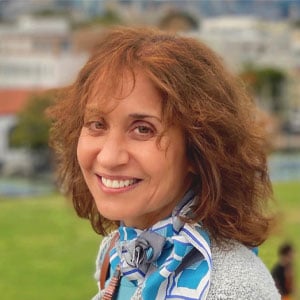
While living in London in my early 20s, I regularly took advantage of Britain’s high-speed trains to explore the constellation of towns surrounding the capital. Flash-forward 20 years, and as soon as our two daughters were old enough, my husband and I began taking them abroad. When in London, we’d often use trains to visit scenic towns like Bath or Cambridge to escape the hustle and bustle of city life.
Not surprisingly, our daughters’ appreciation for England soon matched mine, and I was thrilled when they chose to attend “Uni” there, as the British say. Here’s why Bath and Cambridge became two of our family’s favorite destinations—and remain so today.
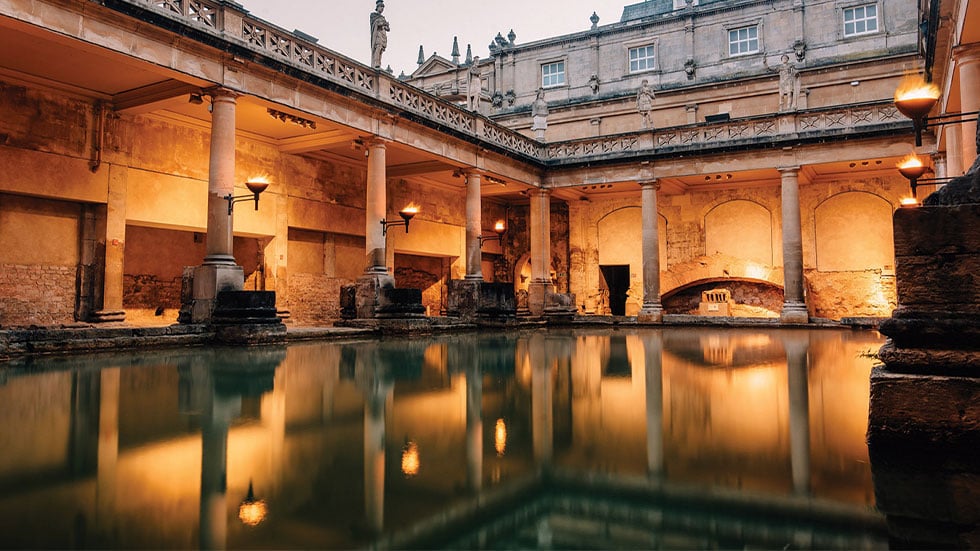
Roman baths glow under torchlight in Bath; Photo by courtesy of Visit Bath
BATH: BATHED IN BEAUTY
Nestled in the Avon Valley in southwestern England just an 80-minute train ride from London, Bath was a revered retreat for the Celts and Romans because of the geothermal springs bubbling under the limestone hills. The Romans founded a town here in the 1st century AD and constructed a Palladian bathhouse where citizens could luxuriate in the mineral waters. Today, the bathhouse—called the Temple of Sulis Minerva—is no longer in use, but it remains Bath’s most popular attraction.
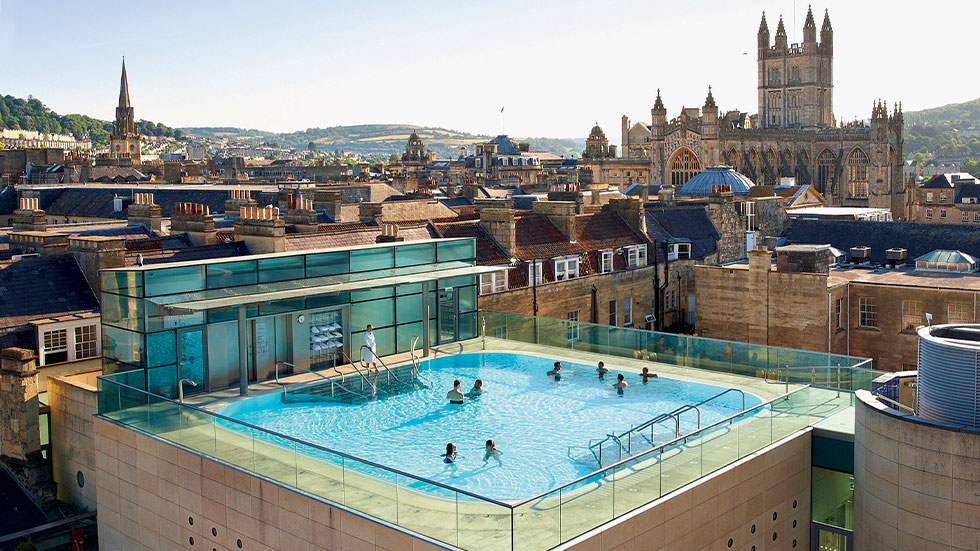
Thermae Bath Spa’s rooftop pool offers stellar views of the town of Bath; Photo courtesy of Visit Bath
“Taking the waters” is a cherished activity in Bath, and there are several wellness experiences where you can immerse in 114-degree pools. On one visit, my daughter Allie and her friends soaked in the sulphury Thermae Bath Spa, where the four mineral spas include an open-air rooftop pool providing a commanding view of the spires of Bath Abbey.

The Royal Crescent is a curved row of townhomes in Bath; Photo by Renee Sklarew
To get an overview of Bath history, our family once joined a free walking tour called The Mayor of Bath’s Honorary Guide. During the two-hour stroll, we learned that the town of Bath is a UNESCO World Heritage Site and that most of the gold-hued buildings date to the 18th century. That’s when throngs of British aristocrats began coming here for the curative mineral waters and a whirlwind of social events. Our walking tour ended at the Royal Crescent, a 500-foot-long half-moon of Georgian townhomes overlooking a sweeping lawn where the well-to-do once promenaded.
We never miss dining in one of Bath’s oldest buildings (circa 1482). It’s now a tea café and museum called Sally Lunn’s Tea Room & Restaurant, named for Sally Lunn, a Huguenot who fled France to escape religious persecution. Lunn took a job baking buttery buns in this building in 1682, and the baking continues to this day. We adore sipping tea (pinky out) and slathering plate-sized buns with clotted cream and strawberry preserves.
Even if you don’t follow British TV and film, you’ll notice this walkable town is movie-set gorgeous. Anglophiles like us recognize settings from TV shows such as Bridgerton and Sherlock that were filmed here.
A highlight of one of our trips was touring the Jane Austen Centre, housed in the former home of the acclaimed author. Here, Allie and I donned Regency-period dresses to pose with a wax version of Mr. Darcy, the romantic hero of Pride and Prejudice. Our costumed guide noted that several of Austen’s novels were set in Bath, including Northanger Abbey in which young protaganist Catherine Morland exclaims, “Oh! Who can ever be tired of Bath?”
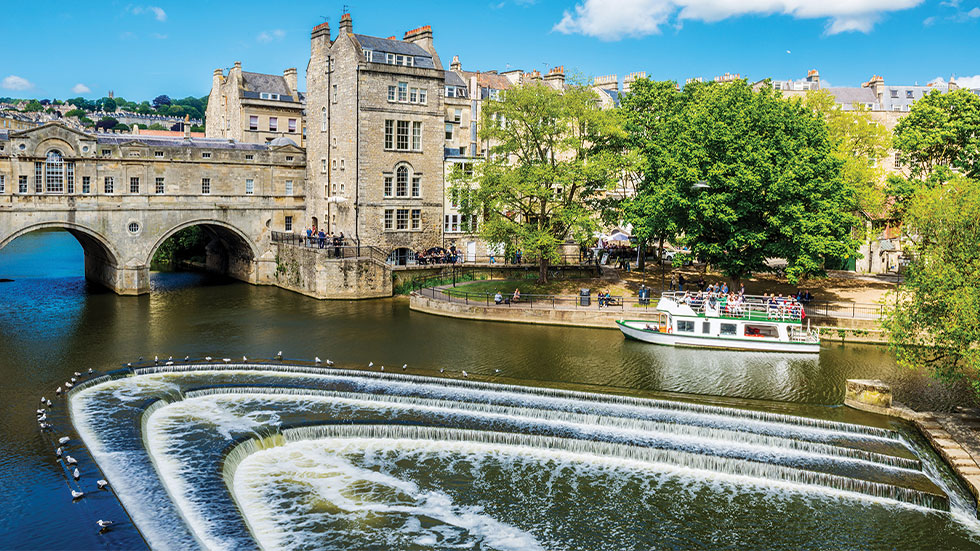
Pulteney Bridge crosses the River Avon in Bath; Photo by Paul/Stock.Adobe.com
You, too, may wish to spend more time here. Consider staying overnight to enjoy the glow of streetlamps. Have lunch at The Pump Room (Austen was a regular), walk across Pulteney Bridge (a backdrop for the movies Vanity Fair and Les Misérables), inspect The Holburne Museum (Lady Danbury’s home in Bridgerton), see the tiny houseboats on the River Avon called “Live-Ons,” and wander the Georgian gardens of Prior Park (seen in Poldark). Even without a soak in the mineral springs, Bath is hot stuff for history buffs.
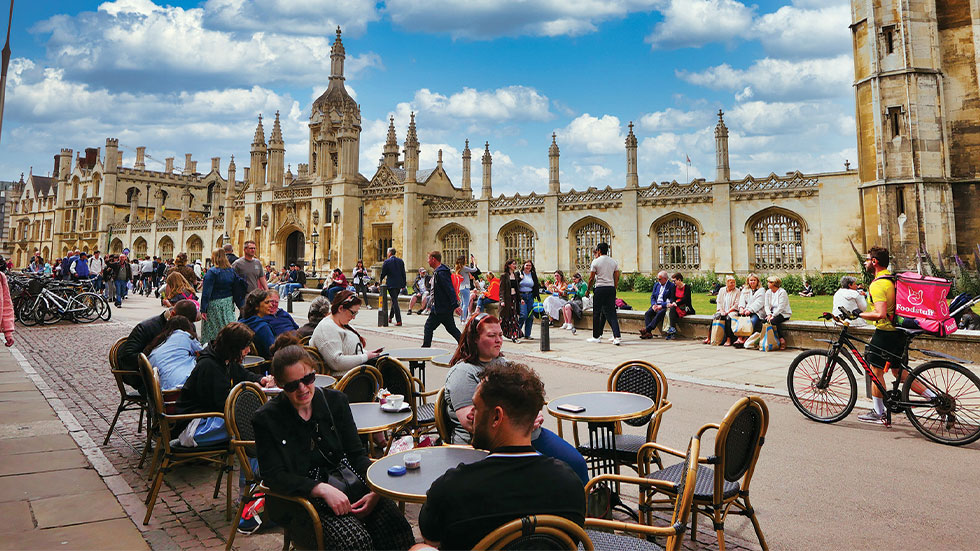
The centrally located King’s Parade borders the oldest Cambridge University colleges; Photo by Renee Sklarew
CAMBRIDGE: STEEPED IN HISTORY
You can imagine how excited we were when our younger daughter, Danielle, was accepted at the University of Cambridge—not only for her, but also for my family. Now, we had even more reasons to visit this lively college town 45 minutes from the capital.
The University of Cambridge comprises 31 constituent colleges spread across a sprawling campus. After arriving, we always head straight to King’s Parade, where cobblestone streets border colleges with Gothic flourishes and impossibly green lawns. Throngs of students and tourists congregate in the boutiques, coffee shops and bookstores.
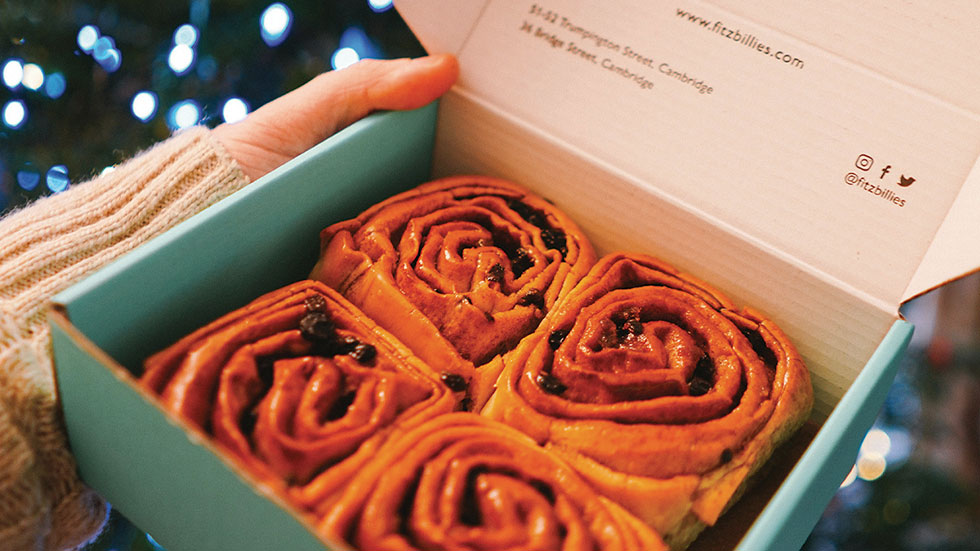
Sticky Chelsea buns from the bakery Fitzbillies in Cambridge; Photo by phil hearing/Unsplash
We like to begin our day in Cambridge with a Chelsea bun at Fitzbillies, a bakery that has fed scholars and faculty since 1920. The buns are slathered with sticky syrup on both sides and require a stack of napkins to eat. Then, we peruse Cambridge Market, an outdoor bazaar selling food, crafts and Cambridge University souvenirs. The market opened during the Middle Ages and is still the town’s central meeting place.
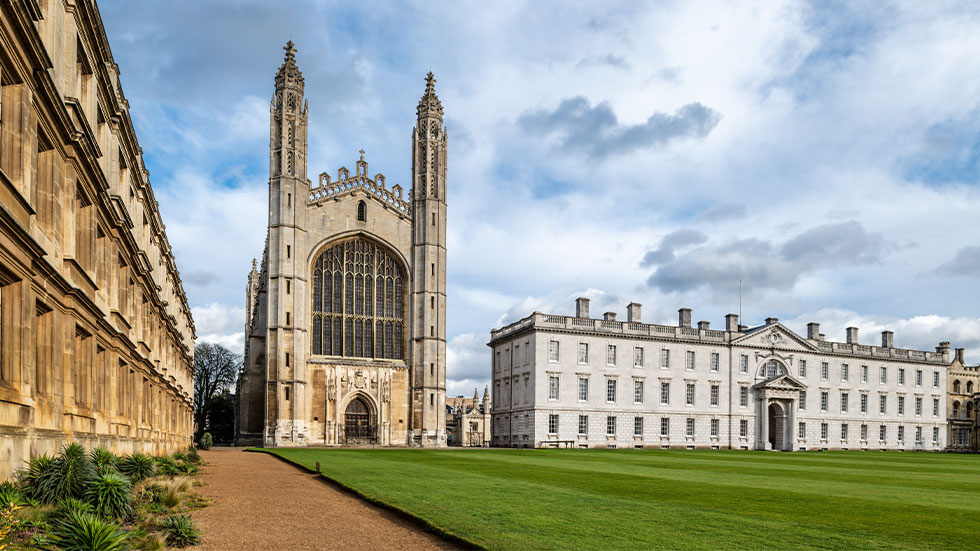
The famous King's College in Cambridge, UK; Photo by Markos Loizou/stock.adobe.com
On our first visit to Cambridge, we followed an alumna-led Cambridge walking tour during which a witty graduate led us into King’s College. There, in between descriptions of the town’s history, she regaled us with stories of student pranks, like the tradition of students free-climbing the circa-1441 college’s walls to place a Santa hat on each turret.
We learned that the University of Cambridge was founded in 1209 (it’s the world’s fourth-oldest university) and that Charles Darwin, Alan Turing, Lord Byron and Isaac Newton all studied here. Our guide led us down King’s Parade to see Corpus Clock, a large sculpture clock at Taylor Library (unveiled by Cambridge professor Stephen Hawking in 2008), and ended at Senate House, the university’s ceremonial center, where years later, Danielle graduated in her bow-tied gown.
We have our preferred haunts, including The Eagle Pub, where scientists Francis Crick and James Watson, who were working at a laboratory nearby, announced to the pub’s lunchtime crowd that their discovery of the DNA double helix was “the secret of life.”

Fish-and-chips with mushy peas from The Architect Pub in Cambridge; Photo by Renee Sklarew
We love the fish-and-chips at The Architect Pub, where diners can choose an accompaniment of “mash” potatoes and mushy peas. If it’s Sunday, sitting down to a proper English roast of sirloin beef and Yorkshire pudding at The Mitre is a must.
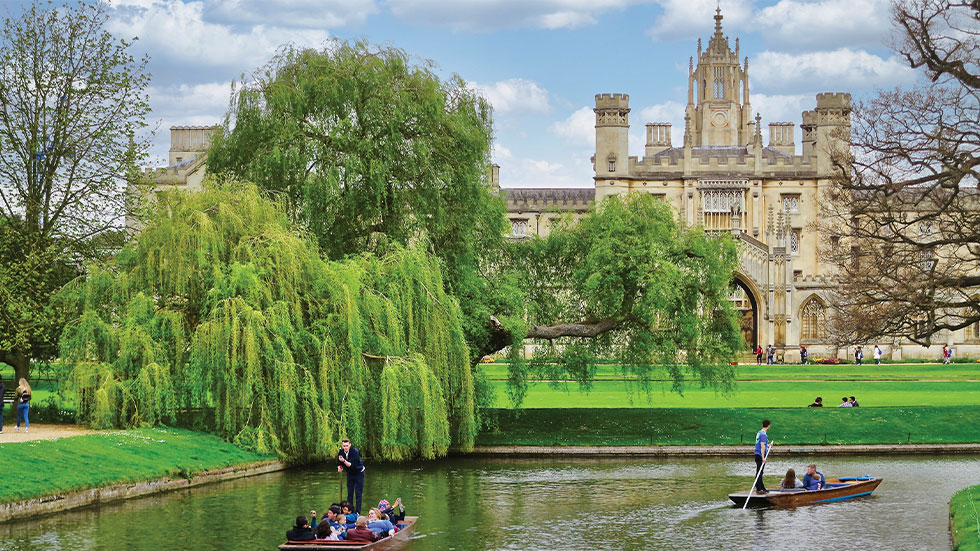
Punting by St. John’s College on the River Cam; Photo by Renee Sklarew
My top experience in Cambridge is punting down the River Cam. Passengers climb aboard a narrow wooden boat at Scudamore’s Quayside Punting Station, and the “punting chauffeur” propels the boat forward using a pole inserted into the mucky bottom of the shallow water. Viewing the campus from “The Backs,” we literally saw into the windows of dorms and classrooms. At one point, a fellow leaned out so far, I thought he would tumble into the river.
Each time we would approach the low-slung bridges, our driver would yell, “Duck!” The views of the weeping willow trees and the Bridge of Sighs (a replica of the bridge in Venice) make this Cambridge tradition something to remember.
If you time your trip to Cambridge during the winter or spring holidays, you may hear the angelic voices of a university choral group. One December, we happened upon the young men of St. John’s College Choir practicing for their annual Christmas Carol service. As their harmonies soared toward the arched ceiling of the college chapel, I whispered to Danielle that even after her graduation, we would return to Cambridge. We’ve kept our promise.
